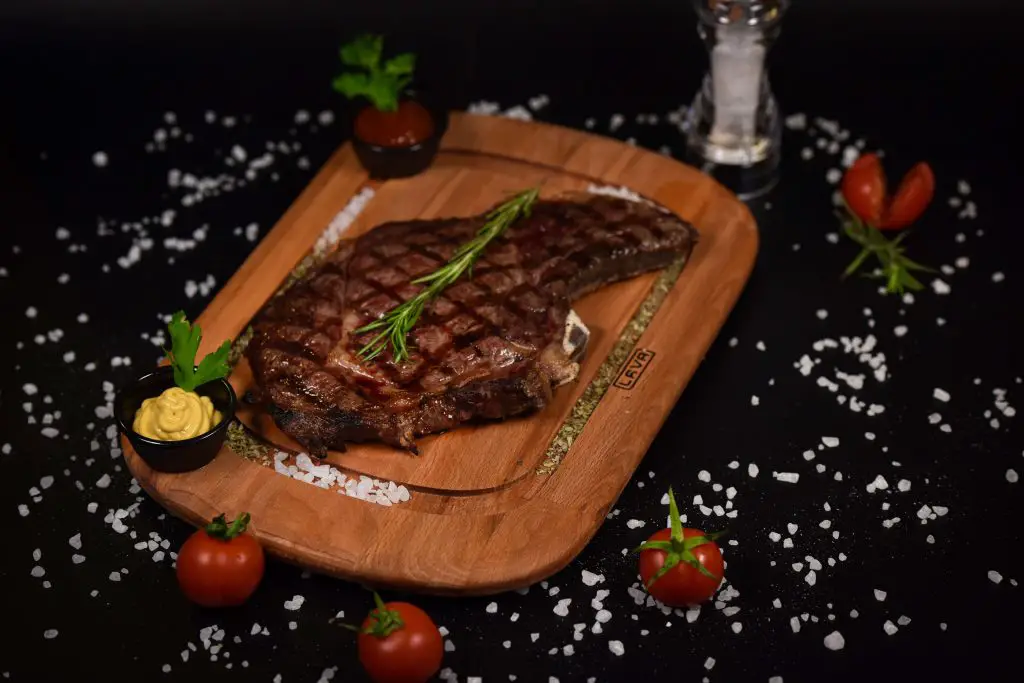One of the most frequently asked questions about cooking steak is how often should you flip a steak?
Some people believe that steak should only be flipped once, and this belief is entirely based on the knowledge transferred to them from their elders, friends, magazines, or cooking shows.
These people are of the opinion that flipping a steak frequently will cause it to lose heat and hence remain undercooked.
However, you might be surprised to learn that it is not true actually. And the reason is pretty simple; you may flip the steak as many times as you would like.
The common belief that steak should only be flipped once is indeed a misconception. Flipping a steak frequently, in reality, can be really beneficial for your steak.
Contents
Why Is Flipping Steak Important?
Flipping is really important for steak for numerous reasons, such as to stop it from drying out, and it also improves the texture of the steak. Few other benefits of flipping are:
Grilling Perfect Steak
We all know that steaks on the grill cook from the surface to the center.
For the steak to be perfectly cooked, the heat has to transfer from the smoking hot grill surface to the center of the steak through the steak’s surface, which is adjacent to the grill.
Therefore the surface of steak adjacent to the grill will always be hotter than the center of the steak or, for that matter, the top of the steak.
These varying temperatures within the same portion of meat are known as gradients. All the gradients pass in the same direction before you flip the steak, which is why flipping steak is important.
Flipping your steak will not only add color to the steak but would also help the steak to cook properly from both sides.
After the steak is flipped, the center of the steak becomes its coolest part, which is called the thermal center.
Thermal grilling is considered the key to grilling steaks perfectly, and flipping steak more frequently implies that neither side of the steak will lose a lot of heat or take in too much heat.
Even Cooking
Flipping is essential if you do not want your steak to dry out.
Heat can easily disperse from one side back into the meat if you will flip your steak often during the cooking process, which would help prevent the outer edges from becoming dry, hard, or overcooked.
Faster Cooking
Since flipping does not let either side absorb too much heat when in front of the fire or lose too much heat when facing away, which is why it is advised to flip the steak every minute for faster cooking.
It has been found that if you flip your steak every minute instead of every two or three minutes, then the cooking time will be reduced three times.
Perfect Crust
Although flipping the steak only once would result in a more brown surface as each side will be charred properly but at the same time, flipping the steak every minute or as often as possible would result in a wonderful crust on the surface.
Maillard Reaction
Maillard reaction, also known as browning, is when the pink color of steak changes to brown and an incredible smell is produced, both as a result of your steak touching the hot surface.
The name Maillard reaction is named after scientist Louis Camille Maillard who found out the principle.
When the steak touches the surface of a hot grill, the rearrangement of amino acids, which are known as building blocks of protein, occurs due to which thousands of molecules are produced.
Those molecules produce a smell and result in color change. The molecules also result in flavor variation and strengthening.
Some people believe that flipping reduces Maillard’s reaction that lessens the browning or even the flavors, which is not actually true.
The main reason behind reduced browning is indeed inadequate heat and an excess of moisture.
Those who believe that flipping the steak multiple times causes the surface to lose heat each time it faces upwards, which restrains browning are actually missing out on one point.
Flipping also allows for the more efficient vanishing of moisture present on the steak’s surface. Therefore flipping the steak results in a higher Maillard reaction, so it is recommended to flip the steak frequently.
What Is The JFK Method?
Well, most of us have heard the term JFK, but very few of us know what it stands for. JFK means keep flipping, which refers to fast and frequent flipping to cook the steak to perfection.
The concept behind the JFK method is to create a perfect crust without letting either side of the steak facing fire for a long time.
This method is famous for giving tremendous crust along with the evenly cooked interior without the risk of greyish edges.
So how is this all achieved? Yes, by flipping the steak constantly through the cooking process. And when I say constantly, it literally means flipping every 20-30 seconds.
Please do not forget that the flipping needs to be even more frequent if you cook thick seam of fat like sirloin or ribeye. But knowing how often to flip the steak is actually a skill that you will only learn by practice.
Some people get scared at first and are not sure if this method will work but let me assure you that this method works perfectly as I have already experienced it.
I would remind you that you’ve got to trust the crust. As you keep flipping the surface of the steak, it dries out, which renders the fat resulting in an amazing brown char.
However, you need to be patient as it would take some time.
You can get the same crust even without flipping, but to achieve that, you would have to rest the steak on the grill for 7-8 minutes which might make it overcooked from the inside.
In What Case Is It Suitable To Only Flip Steak Once
Although flipping the steak frequently has many advantages, but the only case in which only one flip is recommended is when you want those precious grill marks.
The importance of the appearance of food cannot be ignored when it comes to quality food, which is why some people are particular about grill marks.
If you flip the steak many times, there will be several marks instead of just the right crosshatch. But I personally believe that grill marks are overrated, and instead of grill marks, your goal should be to achieve even browning.
Is It Difficult To Keep Flipping The Steak?
Flipping the steak frequently means standing in front of the grill nonstop, which can be pretty tough for your hands.
And when I say it is difficult for the hands, I am not referring to soft, delicate hands.
Even an expert or professional chef finds it extremely difficult to sustain that radiant heat of a ragingly hot grill, especially when there are many steaks that you are dealing with.
If I say your hands are also being cooked, then I won’t be wrong. So I would advise you to wear gloves to protect your hands, or you can even go for some extra-long tongs.
Reverse Searing As An Alternative To Flipping
Flipping is essential for even cooking steak especially thick ones, but there are alternatives too. One of those alternatives is reverse searing.
In reverse searing, the steak is first baked in the oven, and then it is seared on the pan.
It is an amazing skill because it gives more control over the temperature, and you do not burn the steak or overcook it.
Additionally, it gives the steak a stunning brown crust, and most importantly, the steak is super tender.
Below is the list of the few advantages of reverse sear:
- The warmness of the oven helps in eliminating the moisture from the surface of the steak more efficiently, which results in better browning later on.
- Microwave oven has even temperature and slow heat, both of which keep the steak from overcooking and gives more control over temperature.
- Reverse searing gives a more consistent pink color to the inside of the steak and, at the same time, prevents the edges from being getting tough.
- Even the thickest steak can be cooked to perfection without the risk of overdone or underdone meat.
- Maillard reaction creates a lovely crust when the oven-cooked steak is seared on the preheated cast-iron skillet.
- Since reverse searing ends with pan-searing, which allows for a flavorful sauce to be created with the help of pan drippings.
- You do not have to be constantly on your toes in front of the grill to flip the steak frequently.
Final Thoughts
I would conclude by stressing the need to flip the steak frequently to achieve the maximum flavor and a perfectly cooked steak.
There may be alternate methods, but those will not give you real-life experience of working with fire which is a blessing. Do give a try to the JFK method and share your success stories with us.

